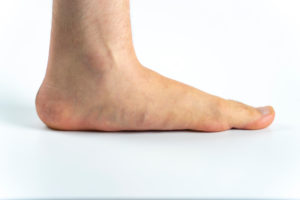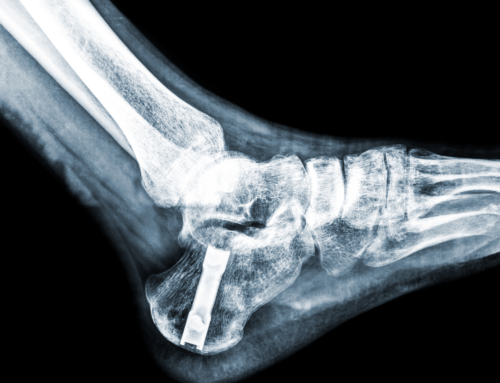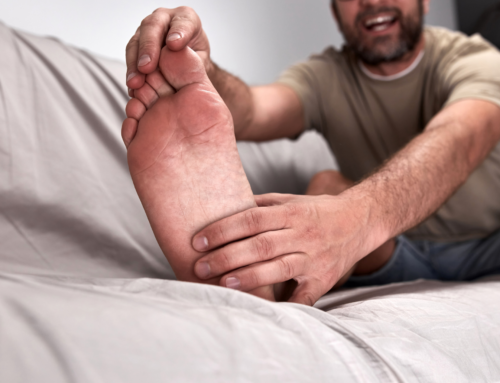Flatfoot, or pes planus, is a condition in which the arch of the foot collapses, causing the entirety of the sole of the foot to touch the ground. This condition can be caused by deformities and create additional complications, including instability, pain, and difficulty walking.
Types of Flat Foot Conditions
Posterior tibial tendon dysfunction or PTTD is one of the most common flatfoot deformities. This condition occurs when the posterior tibial tendon, a tendon running along the inside of the ankle that creates support for the foot’s arch, becomes weakened or damaged. This condition can cause the arch of the foot to collapse and lead to the flattening of the foot and an inward rolling of the ankle. Symptoms of PTTD include pain and swelling on the ankle and difficulty standing on the injured foot.
Adult-acquired flatfoot, or AAF, is another common deformity that causes flatfoot. This condition is often caused by a degenerative condition like arthritis and develops over time. AAF can also be caused by trauma to the foot or ankle and congenital defects. The common symptoms of AAF are swelling, pain, and difficulty standing on the affected foot.
Complications
Patients with flatfoot often suffer from other complications, including shin splints and heel pain. Heel pain is commonly caused by plantar fasciitis. Planter fasciitis is a condition in which the plantar fascia, a band of tissue at the bottom of the foot, becomes damaged or inflamed. Shin splints are another common complication for patients with flatfoot. Overuse of muscles and conditions in the lower leg cause shin splints, which causes pain in the front of the leg, especially when running.
Treatment
Treatment for flatfoot deformities depends on what causes the condition. However, there are non-surgical treatments that work for many mild cases. Non-surgical treatments include orthotic inserts, anti-inflammatory medications, and physical therapy. Physical therapy is an excellent method for treating flatfoot deformities. Physical therapy can help strengthen muscles and tendons in the foot and ankle, improving strength, flexibility, and range of motion in the lower extremities. Orthotic inserts are also a great way to relieve the pain associated with flatfoot deformities and support the arch of the foot.
In extreme cases, surgical care may be necessary to correct a deformity and alleviate pain. For example, surgery for flatfoot deformities is done to repair tendons, repair fused ankle joints and reconstruct the arch of the foot. In addition, surgical solutions are often necessary for conditions like rheumatoid arthritis and posterior tibial tendon dysfunction.
Flat Foot Treatment in Boise
Flint Foot and Ankle can help with treatment plans for all causes of flatfoot. Flatfoot is a painful condition that can impact the quality of life of our patients. The team at Flint Foot and Ankle has surgical and non-surgical approaches to resolving these conditions in a way that alleviates pain and improves a patient’s stability and ability to walk. When treating a deformity like flatfoot, there are many factors to consider, including the root cause of the issue. Our board-certified orthopedic surgeon can help determine the cause of your condition and provide solutions to get you back on your feet.





